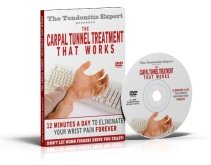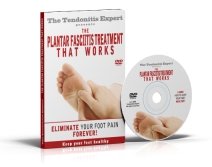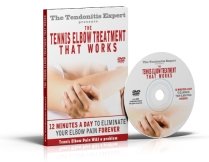Diagnose me - tendonitis? carpal tunnel? or anything else
by Miriam
(New York)
It gets better or worse based on how much I type.
The pain varies, but most of the time, it starts out just below my elbow and travels down, on a slant, to my wrist and fingers.
When it is really bad I get tingling in my fingers. I have been diagnosed with tendinitis. It gets much worse if I have any flexion in my wrist, so wrist splints made it worse.
Here is some more information about me:
I have never had a major injury. I have played piano for 8 years, but I have stopped 2 years ago. I have hypothyroidism. I type very frequently, and I know that is what it is mostly from.
I have a few question:
1. What are the names of the muscles and tendons that are involved in my pain.
2. Should I do occupational therapy. I have done it in the past, but it never really helped. I might of just had bad therapists.)
3. Would you recommend Kinesio tape. (that is the only thing that seems to help, but I’ve been told that that is not a long term solution.)
4. Could hypothyroidism make me me more prone to this muscle and tendon pain. (I ask this because I have heard that Hypothyroidism can cause muscle pain and carpal tunnel syndrome.)
Thank you so much
----
Joshua Answers:
Hello Miriam. Thanks for all the details.
So....
On the structural side of things, lots of typing and piano playing and the the posture those require, set you up for Carpal Tunnel symptoms.
The Scalene muscles at the neck step on the hose of the nerve, as do front of the chest and shoulder muscles, as do the extensor and flexor muscles of the forearm. Thumb pad muscles too.
It's a dynamic from neck to wrist that includes chronically tight muscles and shrunkwrapped connective tissue, like saran wrap tightly wrapped around a half
Also, there is a link between Carpal Tunnel symptoms and hypothyroidism. Carpal Tunnel and Thyroid article by Kerri Knox R.N.
My Kerri at www.Easy-Immune-Health.com (she wrote the article) is the person you want to talk to about dealing with your hypothyroidism.
And also, I'm 100% certain that you are Vitamin D deficient.
As far as diagnosing Tendonitis or Carpal Tunnel, only doctors can diagnose.
I can, however, tell you all about the Tendonitis dynamic of increasing pain and tightness as well as the other aspects of a Pain Causing Dynamic that you have going on.
If you want to be pain free and play again, you need to reverse those dynamcs. It will take some work and some effort, but it's doable.
And ideally we'll start to reverse your hypothyroidism too. And it's easy to get your Vit D levels up.
So as far as your questions...
4. Yes, hypothyroidism can play a role.
3. Sure, physiotaping is fine. But as you say, it's not a long term solution. It doesn't reverse the problem.
2. Occupational therapy, sure, if they know how to reverse the dynamic. If they can effectively counter the inflammation, counter the muscle tightness, and counter the connective tissue restriction, then go for it.
1. There's a bunch of muscles. Google 'forearm anatomy' and there's lots of choices.
Basically, you have wrist and finger extensors, and wrist and finger flexors. But everything is connected, and you want to deal with the entire ecology of the arm.
More questions, more answers.

Joshua Tucker, B.A., C.M.T.
The Tendonitis Expert
www.TendonitisExpert.com
| |
| Share Your Story |
Return to Ask The Tendonitis Expert .


